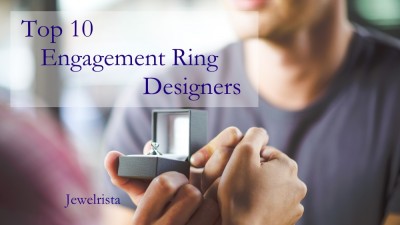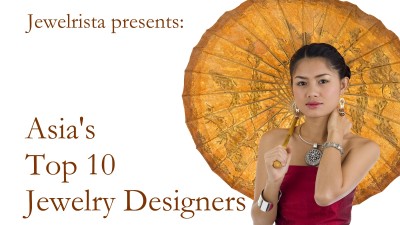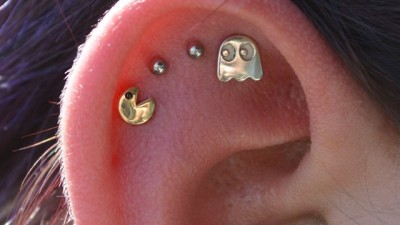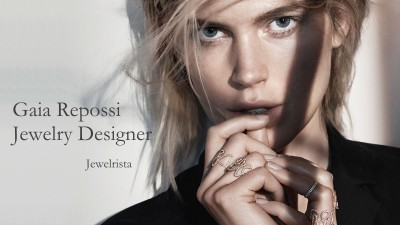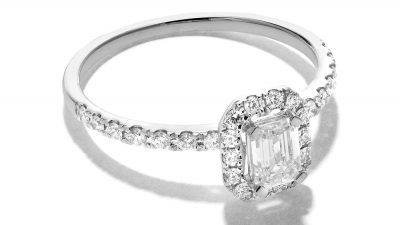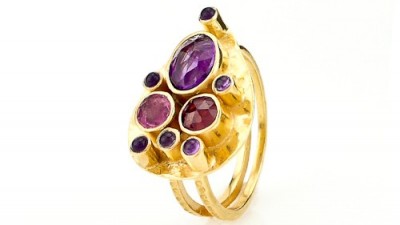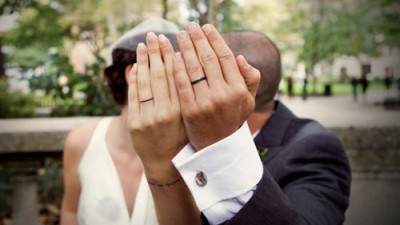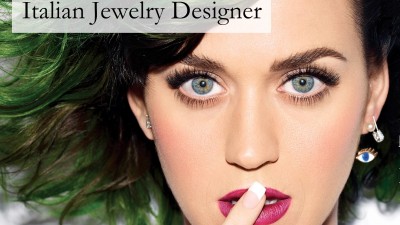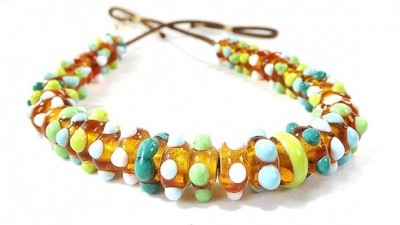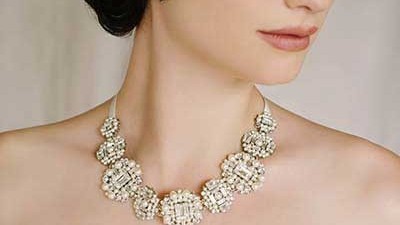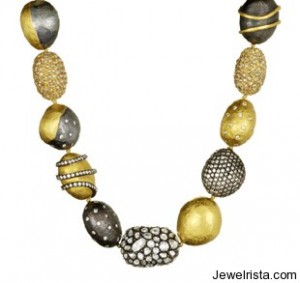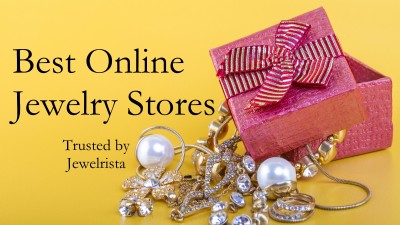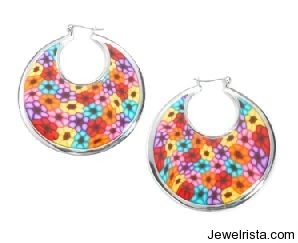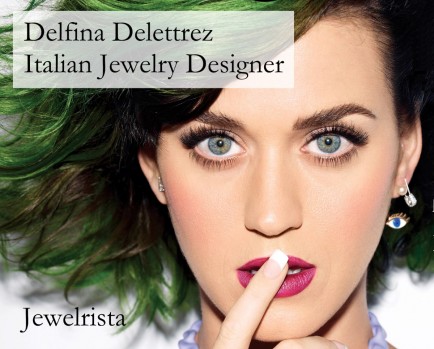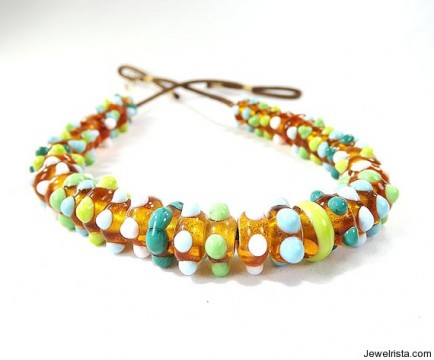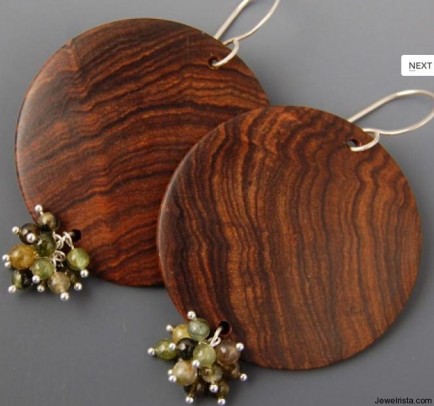“Afro” Earrings – Thousand-Flowers Design
During the second half of the 14th century B.C, a technique for manufacturing color rich glass dishes and jewelry was developed in Mesopotamia. This technique was well known in Ancient Egypt, and reached the pick of its blossom the Hellenistic and Roman ‘Glass Mosaic’ workshops. There are three stages for creating mosaic glass patterns: first, a few colored glass rods, in accordance with the desired pattern, are held together and fussed into one multi-colored rod. Second, using pliers, the rod is stretched until it becomes a long and thin tread. The formally formed design does not change, it only decreases in size. The third and last stage is the slicing of the colorful rod into slices showing a one dimensional picture on their faces. During the years this technique traveled around the world, and finally landed at the 14th century A.C. on the island of Moreno, Italy. Currently, the present name is ‘millefiori’ meaning a thousand flowers in Italian, in tribute to the famous colorful pattern.
The basic difference between the mosaic/millefiori technique to our creations, is of course the usage of other materials. The polymeric material we use is naturally soft, and hence the melting and reducing process we perform by manual rolling and tightening, providing more accurate and richer results than with the glass. Our diverse millefiori patterns were created while utilizing the widest array of natural colors (Malachite, Coral, Mercury), and textile textures (leopard, houndstooth), combined with Eastern ornamenting work, as a tribute to ancient techniques (such as the mosaic and the thousand flowers) and inspired by the works of Gustav Klimt. The second part of the procedure, which is not less important than building the millefiori pattern, is designing the jewelry item: The silver pendants which we manufacture by various silversmith techniques, are used as a base for the vivacious designs, providing them with shapes which are influenced by elements from the plant and animal kingdoms, the Israeli cultural and material world, and by romantic and mystical influences. To complete the process, we coat the top of the pendant with clear enamel, giving it a glossy, glasslike rich look.
To learn more about these earrings, visit Adina Plastelina.


